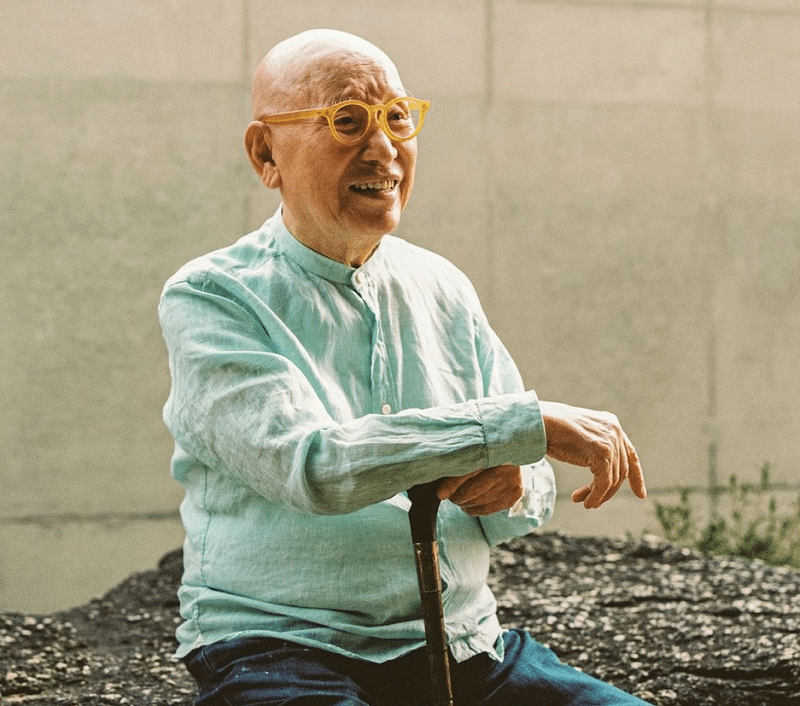Table of Contents
Introduction
South Korean art mourns the loss of a prominent figure, Park Seo-bo, who recently passed away at the age of 91. This article delves into the life and legacy of this influential artist, discussing his significant contributions to the Dansaekhwa art movement, his brave decision regarding his health, and the enduring impact he leaves on the world of Korean art.
Park Seo-bo Passed Away
The art world lost a true luminary on October 14, 2023, as Park Seo-bo, the celebrated South Korean painter, succumbed to lung cancer at the age of 91. Park chose not to pursue treatment for his advanced cancer diagnosis, marking the end of an era in the art world.
Who Was Park Seo-bo?
Born in Japanese-occupied South Korea, Park Seo-bo’s early life was marked by hardship and the disruption of his education due to the Korean War. Despite these challenges, he remained dedicated to his passion for art and became a pivotal figure in the South Korean art scene. His innovative and abstract artistry was a testament to his unique vision and artistic prowess.
Specification |
Details |
| Name | Park Seo-bo |
| Born | November 15, 1931 |
| Died | October 14, 2023 |
| Age | 91 years old at the time of death |
| Birthplace | Yecheon County, North Gyeongsang, South Korea |
| Education | Pursued traditional painting at Hongik University |
| Career | Pioneer of the Korean Art Informel movement |
| Art Style | Known for abstract, monochromatic works with gestural brush strokes |
| Legacy | Played a pivotal role in the Dansaekhwa movement, a significant figure in Korean contemporary art |
Park Seo-bo’s Age
Park Seo-bo was born on November 15, 1931, and he passed away on October 14, 2023, at the age of 91. His life spanned a tumultuous period in Korean history, and his contributions to the art world have left an enduring legacy.
Park Seo-bo’s Early Life
Born in Yecheon County, North Gyeongsang, South Korea, Park Seo-bo developed a deep love for artistic expression from a young age. Despite being drafted into military service during the Korean War, these early experiences shaped his artistic perspective, contributing to his distinctive and influential artistic vision.
Park Seo-bo’s Career
In the late 1950s, Park Seo-bo embarked on an artistic journey that would lead to his ascent as a pivotal figure in the South Korean art scene. His abstract, monochromatic art featuring expressive brush strokes and subdued color palettes captured the hearts of audiences worldwide, solidifying his enduring legacy in the realm of art.
What Happened to Park Seo-bo?
In 2022, Park Seo-bo received a diagnosis of advanced lung cancer and made the heartfelt decision not to pursue medical treatment. Tragically, he succumbed to this illness on October 14, 2023, marking the end of a remarkable career that had left an indelible mark in the realm of art.
How Did Park Seo-bo Die?
Park Seo-bo passed away due to complications from lung cancer. Despite the advanced nature of his diagnosis, he had chosen not to undergo medical treatment. His passing marked the conclusion of a distinguished career that had made significant contributions to the world of art and left a lasting impact on the art community.
Park Seo-bo Passed Away – FAQs
1. Who was Park Seo-bo?
Park Seo-bo was a prominent South Korean painter known for his abstract and monochromatic art, particularly his “Écriture” series, and a key figure in the Dansaekhwa art movement.
2. How did Park Seo-bo pass away?
Park Seo-bo passed away at the age of 91 from lung cancer, a condition for which he chose not to seek treatment.
3. What is Dansaekhwa art movement known for?
Dansaekhwa is known for its abstract, monochromatic works characterized by gestural brush strokes, and Park Seo-bo was a pioneer in this movement.
4. What caused controversy around Park Seo-bo’s art in 2021?
Controversy arose in 2021 when some felt that Park Seo-bo’s art lacked political content, leading to criticism from a younger generation of artists.
5. What is Park Seo-bo’s legacy in Korean art?
Park Seo-bo left a significant legacy in Korean art, contributing to the Dansaekhwa movement and pioneering abstract, monochromatic works, which remain invaluable in Korean contemporary art.
Conclusion
The passing of Park Seo-bo marks the end of an era in South Korean art. His innovative and abstract artistry, along with his contributions to the Dansaekhwa movement, have solidified his legacy as an influential artist. Park Seo-bo’s decision not to pursue treatment for his illness was a testament to his courage and dedication to his craft. His art will continue to be celebrated and remembered for generations to come.
